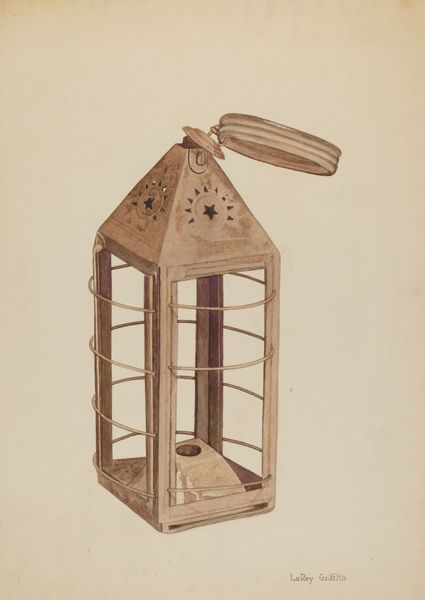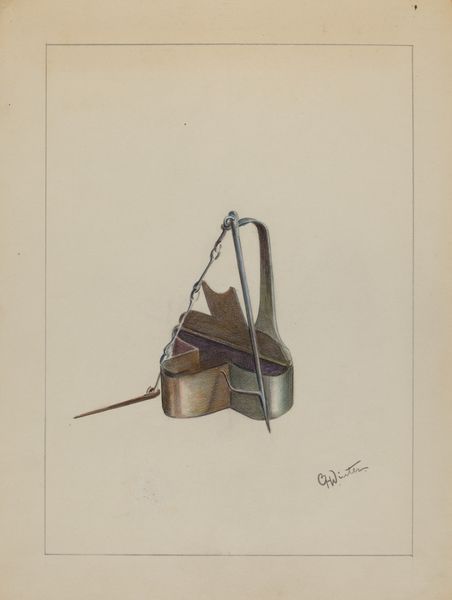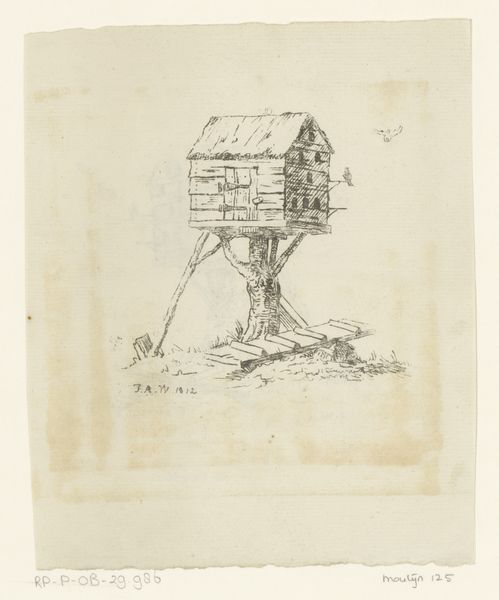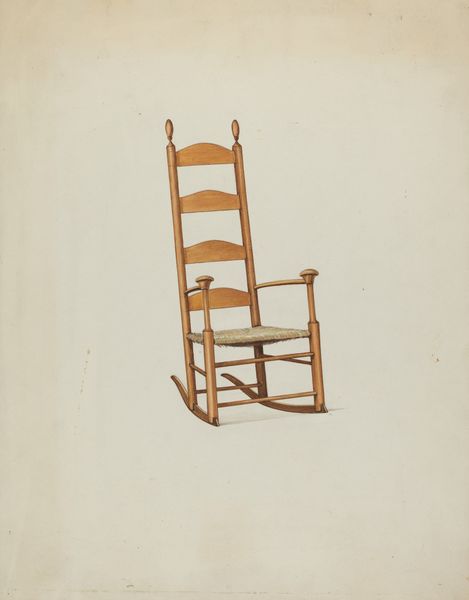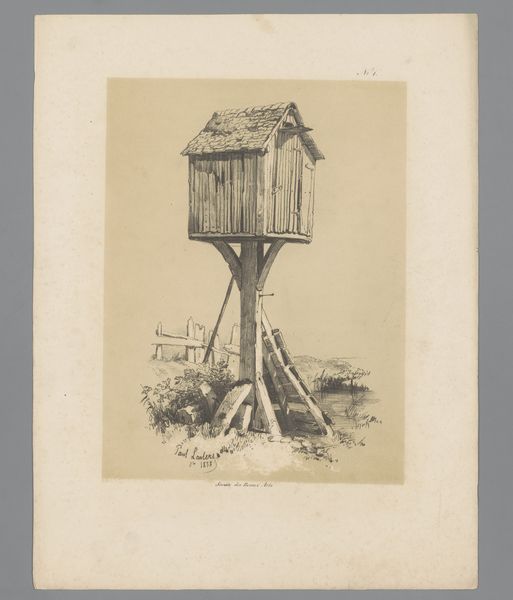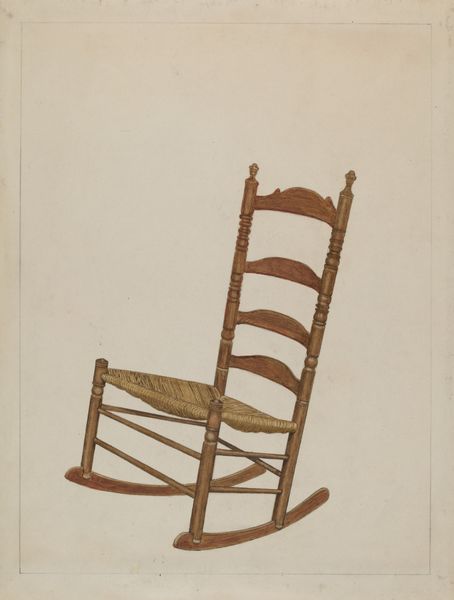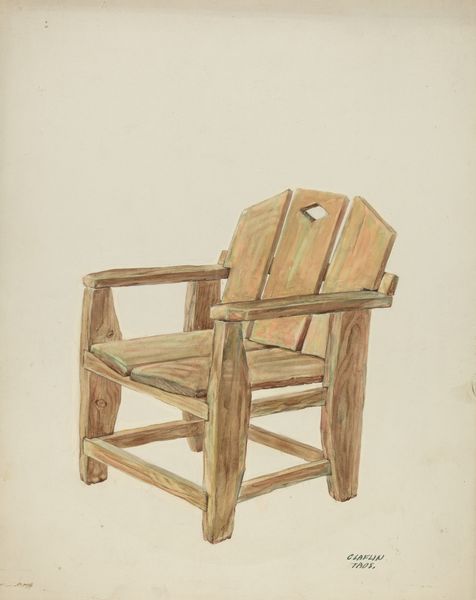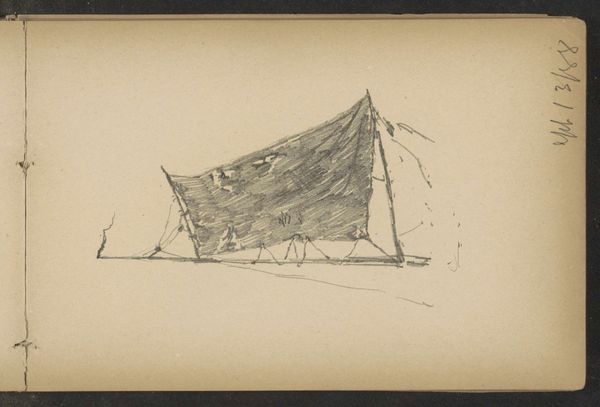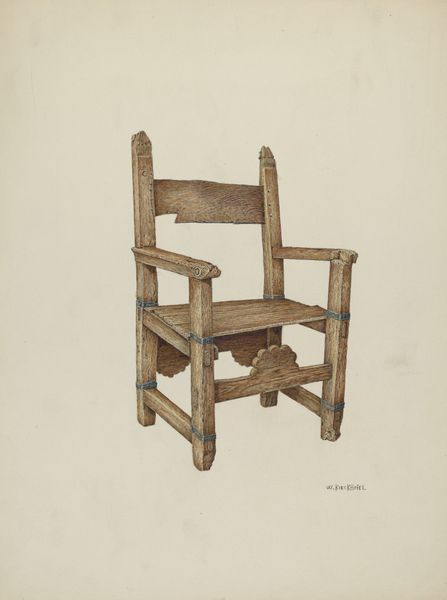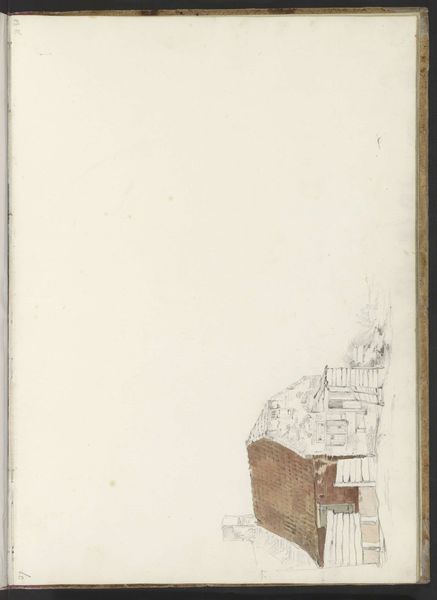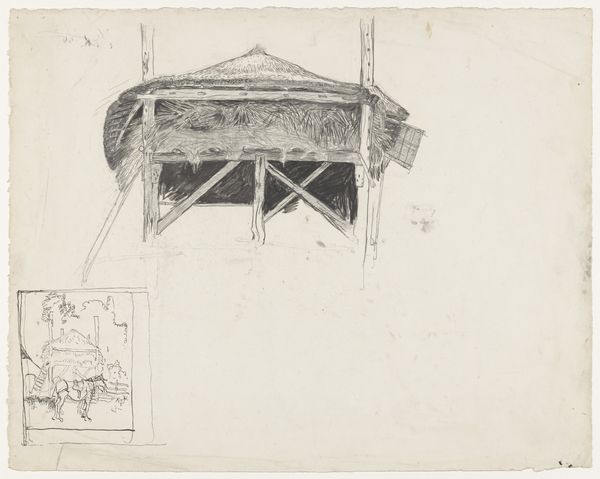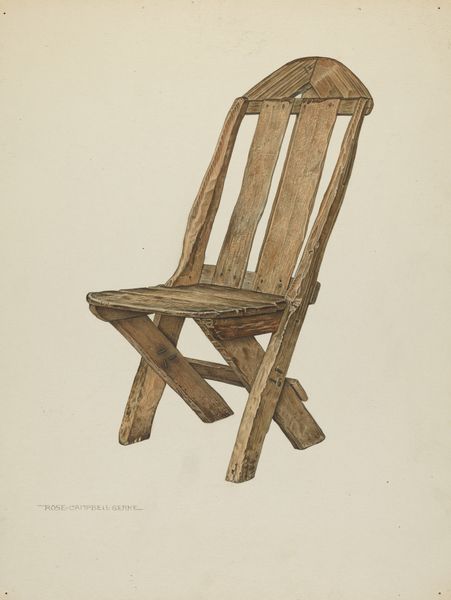
drawing, watercolor
#
drawing
#
landscape
#
watercolor
#
pencil drawing
#
watercolor
#
realism
Dimensions: overall: 36.7 x 29.2 cm (14 7/16 x 11 1/2 in.)
Copyright: National Gallery of Art: CC0 1.0
Curator: I find it immediately poetic, like a little turquoise mirage rising out of a dust bowl. There's a loneliness to it, but also something undeniably sturdy and hopeful. Editor: This is Majel G. Claflin’s "Well Head," dating from around 1937, a watercolor and pencil drawing offering a glimpse into rural America during the Depression era. The muted palette and the almost stark simplicity speak volumes. Curator: Muted is a good word for it. It makes me think about whispered stories and resilience. I wonder what kind of stories that well could tell? You know, the water it might have given...or withheld. Editor: Absolutely. The well isn’t just a functional object, but a potent symbol of sustenance and community. The social and economic hardships of the time, the dependence on scarce resources, and the central role of water in agrarian life – it all comes flooding back to us through Claflin's careful rendering. Curator: Flooding! Nicely put. I’m struck by the angle, too. The sort of crooked angle adds character; there is something incredibly endearing in imperfection like it’s about to fall, or it had seen things Editor: The seemingly ramshackle construction is suggestive of makeshift solutions in times of adversity, the pragmatic improvisation required for survival in the face of systemic failure. Curator: True! You almost forget that behind the image lies a struggle, so real it dries out your tongue to talk about. The pale colors actually heighten the emotion in the end; it creates this eerie scene that gets under your skin without you realizing. It seems like it's a ghost in some ways. Editor: A "ghost" is hauntingly on point! Considering the gendered dimensions of labor during that time – women's disproportionate burden in water collection, the unseen toil that often went unrecognized and uncompensated. Curator: Yes. And also this makes you feel gratitude in a time when all is instantly there when you want to hydrate. This work lets the modern soul feel a past generation and it helps us appreciate it. Editor: I completely agree. This small, beautiful watercolor speaks to immense historical complexities and continues to resonate today, perhaps even more poignantly. It prompts reflection on environmental justice, access to resources, and the legacies of hardship that shape our present.
Comments
No comments
Be the first to comment and join the conversation on the ultimate creative platform.
